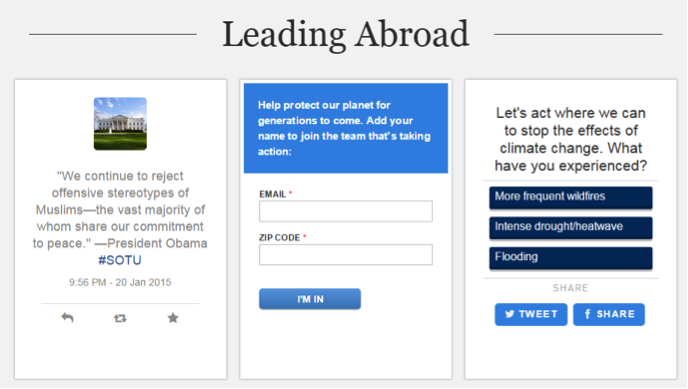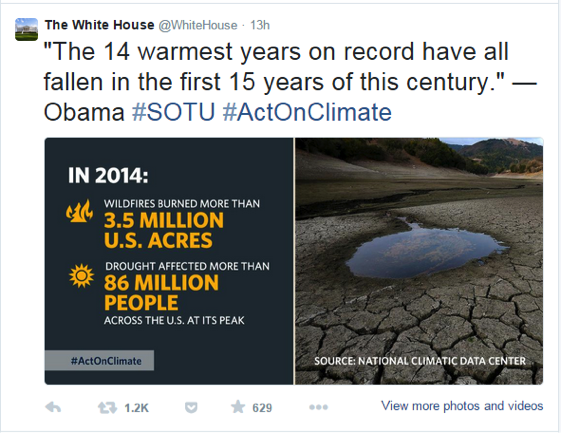State of the (Social Media) Union

If predictions about the most recent State of the Union (SOTU) address are correct, a little more than 30 million people watched the SOTU from the comfort of their home on their television sets. That’s a significant drop from an average of 42.3 million people watching the speech during the past two decades.
When you compare that statistic to the 125 million Americans that log onto Facebook every day, 30 million viewers starts to sound quite small. On Facebook alone, President Obama boasts more than 44 million likes. Couple this with the fact that 44% of Americans reported finding their news on social media platforms and now you’re likely starting to understand why social media played a major role in the SOTU communications strategy.
Instead of just accepting the fact that the TV audience is dwindling, the White House embraced social media and used it to set the stage for and amplify the President’s message leading up to the address. For example, senior advisor Valerie Jarrett penned a post on LinkedIn pushing for paid sick days and family leave policies. Additionally, a video about the expansion of broadband access was posted by the Administration to Upworthy. The President also expanded upon his proposal for free community college with a video posted to Facebook. Lastly, the White House made the full text of the SOTU speech available on Medium before the address, a privilege that is usually only afforded to the press.
In further acknowledgment of the power of social, the White House continued its multi-media and multi-platform outreach during his address. Here’s a few examples of how they handled communications on the major platforms:
- Twitter: Excerpts from the speech were live tweeted during the speech. Some tweets even had accompanying graphics and video to drive home key points. According to Twitter, there were more than 2.6 million tweets sent related to #SOTU from the start of the speech through the end of the Republican response.

- Facebook: Longer excerpts from the speech were shared during the SOTU along with embedded video clips that showed the sound bite as well as additional information related to the topic.
- YouTube: A livestream broadcast (that you can now watch on demand) incorporated a split screen to provide viewers with relevant graphs and charts to supplement the President’s speech. Three YouTube “stars” are also set to interview the President on 1/22. A strategy sure to appeal to the younger American demographic.
- State of the Union Landing Page: Contains a link to the YouTube version of the speech. There are also bits and pieces of the SOTU that have been broken down into messages crafted for sharing on social media. By now, I’m sure you’ve all seen this one.

Social media wasn’t just utilized by the White House. According to the New York Times, “members of Congress (or their staffs) wrote more than one thousand tweets during President Obama’s address.” And this shouldn’t be surprising, these channels give politicians the ability to carefully craft and control messages.
While this year’s SOTU certainly wasn’t the first presidential speech given since the rise of social media, it was the first time that social media was intentional and where the end user – and their channel preferences – took a front seat in the outreach planning process.

Leave a Reply